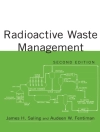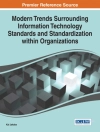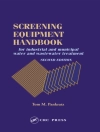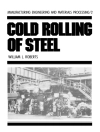This reference text covers the latest issues in the area of nanostructured materials for energy and environmental applications. It focuses on functional aspects, including the basic principles and mechanisms behind the selection of the materials. The applications covered include catalysts, sensors, magnetic refrigeration, and functional electrode materials for energy harvesting (including solar cells, fuel cells and supercapacitors). The text addresses the past, present, and future status of the research through the simplification of the vast literature. Each chapter demonstrates how the nanostructured materials, and their device applications are linked, providing a vital bridge between the research and realisation of the technology. The book compiles results and diagrams in a clear format for researchers, postgraduate students, and industry practitioners, including non-specialists, and provides an overview of the latest current topics in the field.
Key Features:
- Covers the latest issues in the area of nanostructured materials for energy and environmental applications
- Includes catalysts, sensors, magnetic refrigeration, and functional electrode materials for energy harvesting (solar cells, fuel cells and supercapacitors)
- Covers functional aspects of nanostructured materials and their engineering applications, with a particular focus on the basic principles and mechanisms behind the selection of the materials
- Demonstrates how nanostructured materials and their device applications are linked, providing a vital bridge between the research and realisation of the technology
- Acts as a guide for students, researchers and industry practitioners who are searching for suitable nanomaterials for energy and environmental applications
Table of Content
Preface
Acknowledgement
Editor biographies
List of contributors
1 Introduction to engineering nanostructured materials for energy and environmental applications
Part I Energy
2 Engineering 2D chalcogenides for energy and environmental remediation
3 Two-dimensional nanolayers for wearable supercapacitors
4 Micro-mesoporous carbon-based nanostructured materials for flexible supercapacitors
5 Platinum based alloy nanostructure electrocatalyst for oxygen reduction reaction in polymer electrolyte membrane fuel cells
6 Ultrathin, flexible hybrid transition metal oxide nanostructures for renewable energy storage devices
7 Graphene based nanocomposites for energy conversion: the oxygen reduction, oxygen evolution, and hydrogen evolution reactions
8 Materials science of advanced carbon nanomaterials for photovoltaic and photothermal devices
Part II Environmental Remediation
9 Metal doped iron (III) oxide nanomaterials for wastewater treatment
10 Nanoferrites for green magnetic refrigeration
11 Degradation of antibiotic pollutants and green hydrogen production from wastewater through a photocatalytic reaction
12 Fluorescent nanoclusters used as a probe for sensing of toxic chemicals and biomolecules
About the author
Prof. Mangalaraja Ramalinga Viswanathan:
Mangalaraja is the Professor in the Faculty of Engineering and Sciences at the Adolfo Ibanez University, Santiago, Chile. Priorly, he was the Professor and Director of the Department of Materials Engineering from 2010–2016 and Director of International Affairs (from 2018-2019) at the University of Concepcion, Concepcion, Chile. He has also served as the President of the Chilean Metallurgy and Materials Society from 2015–2017.
Dr. Udayabhaskar Rednam:
Udayabhaskar is an Assistant Professor at the Institute of Scientific and Technological Research, University of Atacama, Copiapo, Chile. He previously worked as an Assistant Professor in the Department of Physics at the Vignan’s University, India.
Dr. Sathishkumar Panneerselvam:
Sathishkumar is an Assistant Professor in the Department of Chemistry at Vellore Institute of Technology, India. He has previously worked as an Assistant Professor at the University of Concepcion, Chile, Periyar Maniammai University, India, and Aksum University, Ethiopia.
Prof. Joydeep Dutta:
Joydeep is the Professor and Chair of Functional Materials at the KTH Royal Institute of Technology, Stockholm, Sweden. He is an award-winning author (Choice Award for Outstanding Academic title of 2010 from American Library Association) of the book ‘Fundamentals of Nanotechnology’. He has also written two other textbooks titled ‘Introduction to Nanoscience’ and ‘Introduction to Nanoscience and Nanotechnology’.












